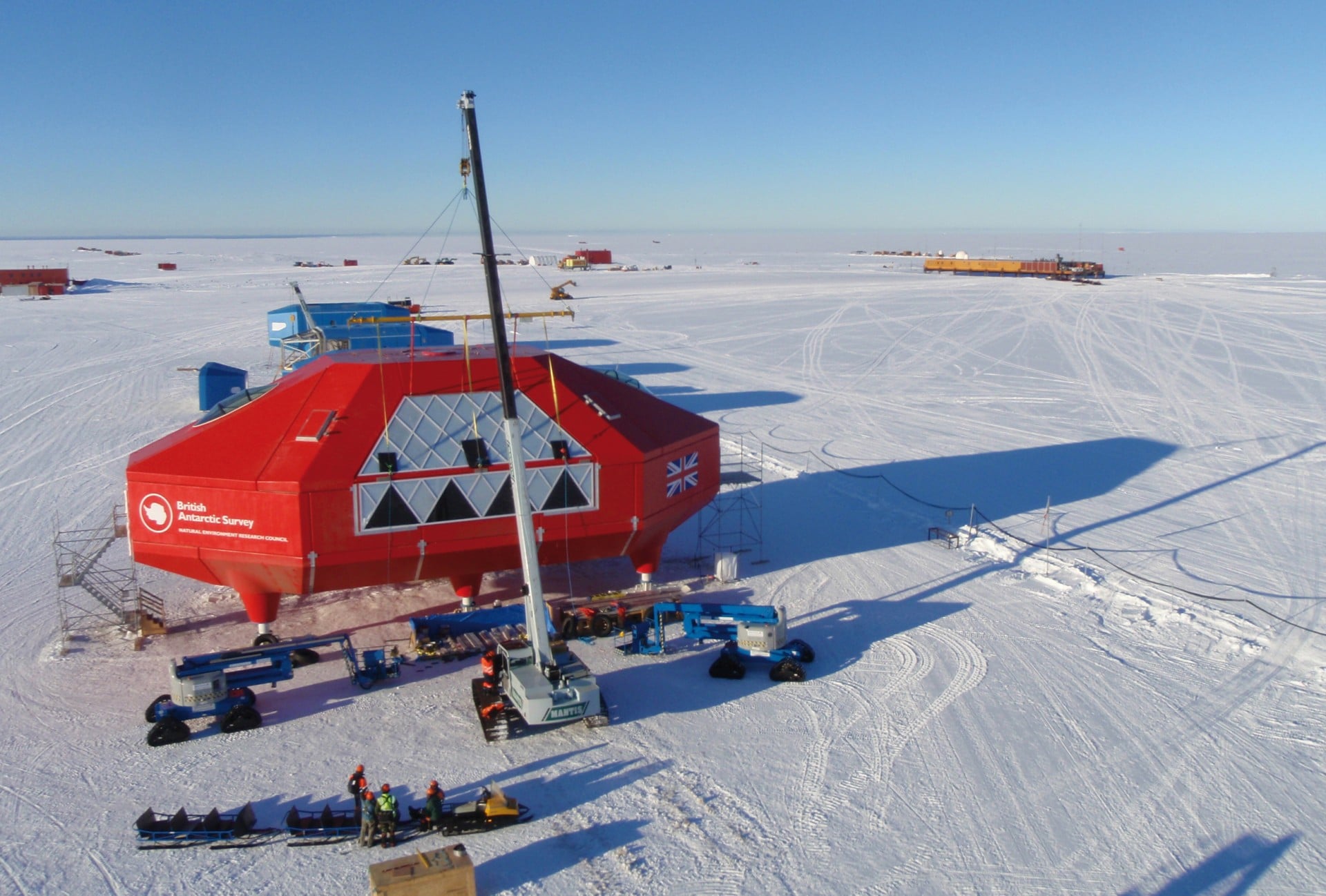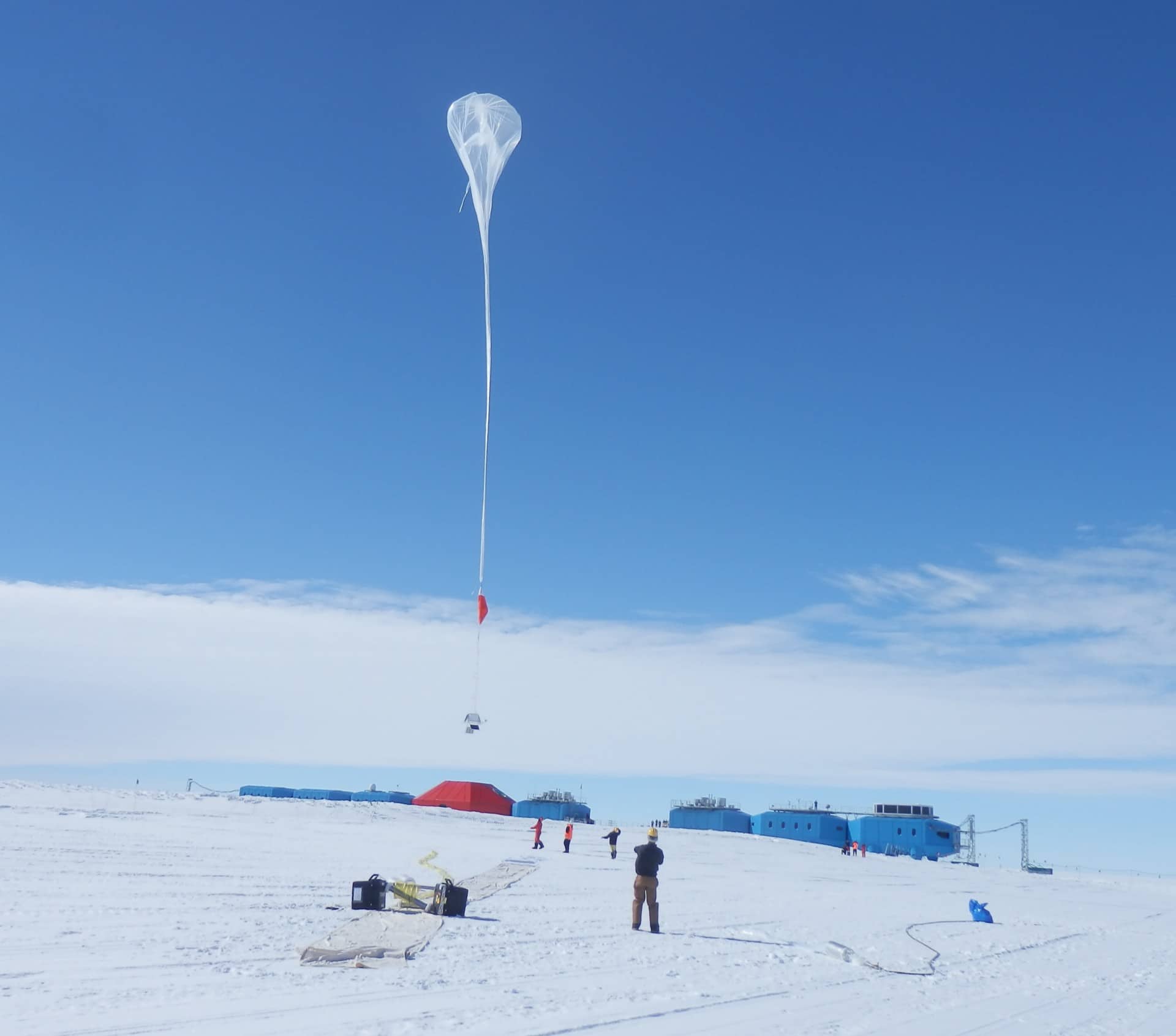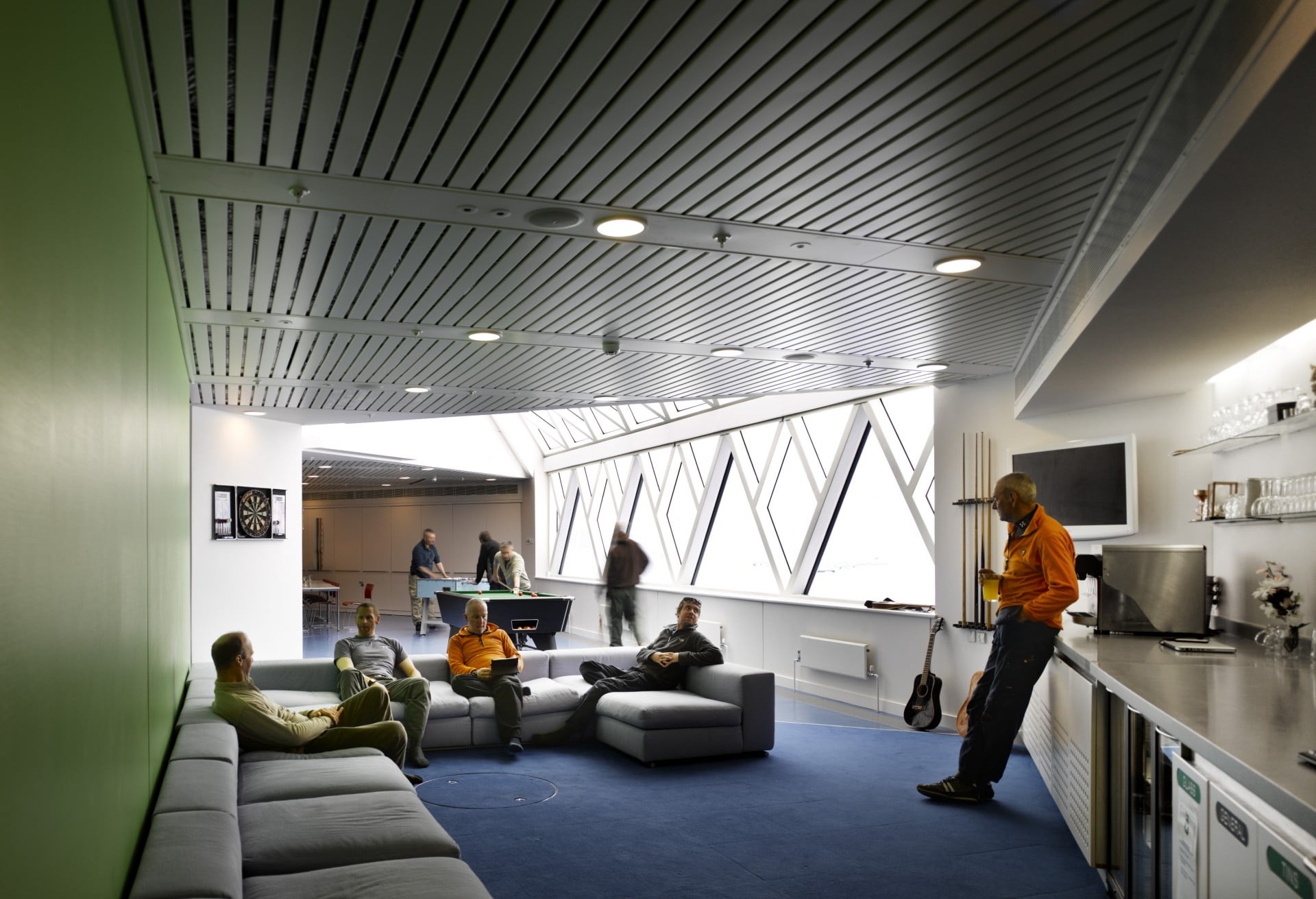Antarctica (Brunt Ice Shelf)
Imagine living on a massive ice shelf thousands of miles away from anyone else, that when the weather gets warmer will come away from the mainland – casting you completely adrift in the Antarctic sea. This has been the fate for each of the five Halley Research Centres since the first construction in 1957. Carrying out world leading research into the earth’s atmosphere, it was here that scientists first discovered the hole in the ozone layer back in 1985. Yet the station’s perpetual movement towards the Weddell Sea, around 400m each year, has meant that each building must eventually be abandoned, lost forever under ice and snow.
In 2013 a new positively space age Halley VI Station was opened, designed by British architect Hugh Broughton. Boasting giant steel strips which allow the station to be moved and re-arranged, the station is completely relocatable. Hydraulic ski parts raise the modular station for snow to be packed underneath, stopping it from becoming buried. Seven interlinking blue modules make up the bedrooms, laboratories, offices and energy plants, with a central two-storey red module featuring a double-height light filled social space. The construction has been designed to support crew numbers ranging from 52 in summer to 16 during the three months of total darkness in winter, when temperatures at the base drop as low as −56°C.
Lying 73 degrees south of the equator, the centre’s position means vital information can be gathered examining polar atmospheric chemistry, sea-level rise and climate change. As one of the few places on the planet where magnetically charged particles come to earth, it is a very special place to carry out research into monitoring what’s happening in the atmosphere. In 2015 a number of projects simulating aspects of a manned spaceflight mission also began; the isolation and darkness at the station during winter being similar to what astronauts might experience during a long-term space flight to the moon, Mars and beyond.
Always on the move, another relocation is on the cards for the research centre – thanks to a deep ice chasm moving towards the station at a rate of 1.7km each year. The research ‘caterpillar’ will ski to safety to avoid being cast adrift on a piece of ice, with a tractor dragging it away to outrun the crevasse.
Project leader
Thomas Welsh, Station Leader
Support the Atlas
We want the Atlas of the Future media platform and our event to be available to everybody, everywhere for free – always. Fancy helping us spread stories of hope and optimism to create a better tomorrow? For those able, we'd be grateful for any donation.
- Please support the Atlas here
- Thank you!






